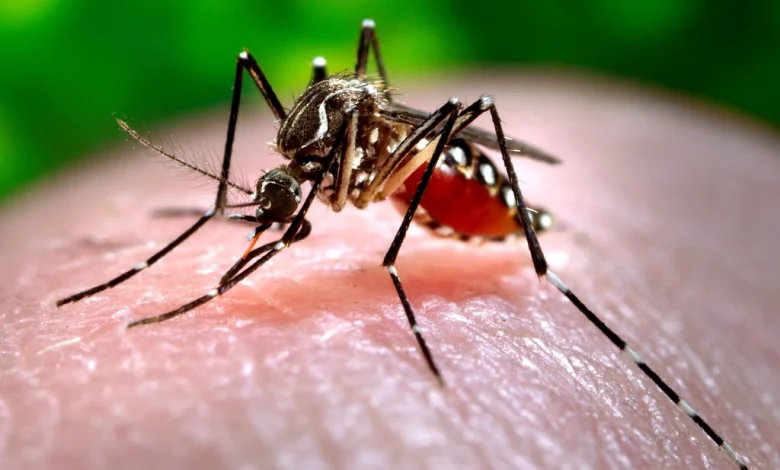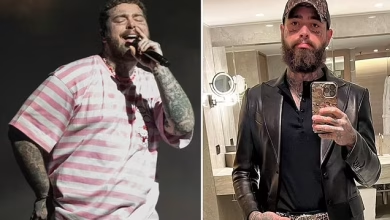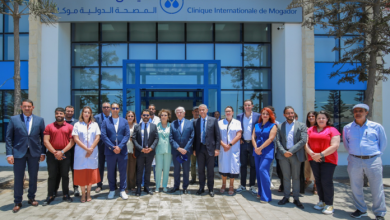New York’s First Local Chikungunya Case: What This Means for Residents and Travelers

On October 14–15, 2025, New York health officials confirmed a locally acquired case of chikungunya virus in a resident of Nassau County on Long Island — the first locally acquired chikungunya infection reported in New York state and the first confirmed local transmission on the U.S. mainland in several years. The patient had not recently traveled abroad, which is why officials concluded the infection was acquired locally. At the time of announcement, investigators had not found infected mosquitoes in local surveillance traps and said the risk to the general public remained low, but public-health teams were increasing surveillance and outreach.
This development raises understandable concern: chikungunya can cause sudden high fever and intensely painful joints, and in some people pain and stiffness can linger for months. But it’s also important to put the event in context (what it does — and does not — mean) and translate the public-health response into practical steps residents and travelers can take to protect themselves.
What is chikungunya?
Chikungunya is a viral disease transmitted to people by infected Aedes mosquitoes, especially Aedes aegypti and Aedes albopictus. Symptoms typically appear 3–7 days after a bite and most commonly include a sudden high fever, severe joint pain (often in the hands and feet), headache, muscle pain, and rash. Most otherwise healthy people recover within a week, but joint pain can persist for weeks, months, or in rare cases, years. Serious complications are uncommon but can occur: infants, older adults, and people with chronic medical conditions are at higher risk of severe disease. There is no specific antiviral treatment; care focuses on relieving symptoms (rest, fluids, acetaminophen/ibuprofen as appropriate).
How is chikungunya spread, and why New York now?
Chikungunya is not spread person-to-person by casual contact; transmission requires a mosquito to bite an infected person and then bite another person, passing the virus on. In areas where Aedes mosquitoes are established, imported cases (travelers returning from places with chikungunya transmission) can seed local mosquito infections and occasional household- or neighborhood-level outbreaks. Historically, the U.S. has seen local chikungunya transmission in Florida, Texas, and U.S. territories, usually following importations and in locations where competent mosquito vectors are present.
New York’s case likely reflects that dynamic: an infected mosquito appears to have bitten someone who had not traveled internationally, indicating local transmission occurred somewhere on Long Island. Importantly, health departments report that Aedes albopictus (the Asian tiger mosquito), which can carry chikungunya though it’s a somewhat less efficient transmitter than Aedes aegypti, is present in parts of New York state — while Aedes aegypti has not been found statewide. Mosquito surveillance teams generally test mosquito pools for viruses; in this particular investigation officials had not yet detected infected mosquito pools, which is reassuring but not definitive proof there was no local virus circulation.
How worried should New Yorkers and visitors be?
Short answer: cautious, informed, but not panicked.
Public-health officials described the immediate risk to the general public as low because (a) this is a single confirmed locally acquired human case so far, (b) investigators hadn’t found infected mosquitoes in traps, and (c) mosquito activity naturally falls as temperatures drop in autumn. That said, the presence of Aedes mosquitoes in the region and warm months earlier in the year create the conditions in which local spread can happen — particularly in small clusters — so health departments are taking the case seriously and increasing surveillance and public messaging.
For most healthy adults the disease is unpleasant but not fatal; long-term disability is uncommon. The highest concern is for infants, older adults, and people with weakened immune systems or significant chronic disease — these groups should be particularly careful to avoid bites and consult a healthcare provider if they develop symptoms.
What public-health agencies are doing now
When a locally acquired arboviral case is confirmed, standard public-health actions include:
- Enhanced human case surveillance (looking for more cases and checking whether other local residents have compatible symptoms).
- Mosquito surveillance: placing more traps, grouping and testing mosquito pools for chikungunya and related viruses. Early detection of infected mosquitoes helps target control measures.
- Targeted mosquito control in areas where infected mosquitoes or human cases are found, which can include larval-source reduction (removing standing water), targeted larviciding, and sometimes localized adult mosquito control actions.
- Provider alerts and public education so clinicians diagnose, test and report suspect cases quickly, and residents know how to protect themselves. Local health departments typically coordinate these actions with state and federal partners (state health department and the CDC) and issue guidance for clinicians and the public.
What residents should do now (practical steps)
Even with a low overall risk, the simple measures below reduce the chance of mosquito-borne infections (not just chikungunya but also West Nile, dengue, and other pathogens):
- Avoid mosquito bites
- Use EPA-registered insect repellents containing DEET, picaridin, IR3535, oil of lemon eucalyptus (OLE/PMD), or 2-undecanone. Follow label instructions (reapply as directed).
- Wear long sleeves and long pants when outdoors during mosquito-active hours. Aedes mosquitoes bite during the day as well as at dusk and dawn.
- Use window and door screens; repair holes. Consider using fans on porches — mosquitoes are weak fliers and breezy conditions reduce bites.
(General guidance on repellents and protection is widely available from public-health agencies.)
- Reduce mosquito habitat around your home
- Empty standing water in containers (flower pots, buckets, bird baths, gutters, tarps, kiddie pools) at least weekly. Aedes mosquitoes can breed in tiny amounts of water.
- Keep yard vegetation trimmed and remove discarded tires or debris that collect water.
- If you have ornamental ponds, maintain them (fish that eat larvae, aeration) or treat as directed.
Mosquito-control programs emphasize source reduction as the first line of defense.
- Act quickly if you get symptoms
- If you have sudden fever with severe joint pain, see a healthcare provider and tell them about recent mosquito exposure or travel. Testing can confirm chikungunya; early diagnosis helps public-health investigators identify potential local spread.
- Avoid additional mosquito bites during the first week of illness: infected people can pass the virus to mosquitoes during the early part of illness, which could sustain local transmission if mosquitoes bite them. Use repellents and stay indoors or under screens until unwell days pass.
- Follow local public-health advice
- Health departments may advise extra steps if more cases or infected mosquito pools are found (targeted spraying, community clean-ups, or neighborhood notifications). Sign up for local alerts and check county/state health websites for updates.
What travelers should know
If you are traveling to areas with ongoing chikungunya transmission (internationally or to U.S. locales where it is active), consider these points:
- Vaccination options: The vaccine landscape changed in 2025. A recombinant chikungunya vaccine (VIMKUNYA, by Bavarian Nordic) is approved in the U.S. for people 12 and older and has been recommended for travelers at increased risk; a live-attenuated vaccine (IXCHIQ, by Valneva) had previously been authorized but its U.S. license was suspended in August 2025 while regulators reviewed post-licensure safety reports. Travelers should consult travel-health clinics or their healthcare provider about vaccine availability, eligibility, and the latest recommendations.
- Before you travel: Check CDC travel notices and local advisories for destinations. Pack effective insect repellent, consider mosquito-protective clothing, and be prepared to avoid outdoor exposure at peak mosquito times.
- If you become ill while traveling or soon after returning: Seek medical attention and tell clinicians about your travel itinerary and mosquito exposures. Early reporting helps public-health authorities track possible importations and prevent onward spread where competent mosquitoes exist.
Testing, treatment, and clinical guidance
Diagnosis of chikungunya is via laboratory testing (PCR early in illness or serology later). There is no antiviral cure; supportive care is the mainstay: rest, hydration, fever control, and analgesics. For people with severe or prolonged joint symptoms, referral to a specialist (e.g., rheumatology) may be appropriate. Clinicians are urged to report suspected and confirmed cases promptly to public-health authorities so contact tracing and mosquito investigation can begin.
Why this matters beyond New York
A single locally acquired case in a temperate area like New York is a reminder that climate, travel, and mosquito ecology allow diseases once considered tropical to appear in new places. Aedes albopictus has expanded its range in recent years, and global travel continues to move viruses between regions. Strengthening mosquito surveillance, timely clinical reporting, community source-reduction, and individual bite-prevention measures are key parts of limiting the public-health impact. Public-health officials view events like this as opportunities to test and refine surveillance and control systems so future small clusters don’t grow into larger outbreaks.
Quick FAQs
Q: Can chikungunya be transmitted directly from person to person?
A: No — direct human-to-human transmission doesn’t occur except in rare situations (e.g., mother to infant at delivery). Transmission in communities requires a mosquito vector.
Q: Should I cancel travel to New York?
A: For most travelers, no. This is a localized public-health event with low risk to the general public at the time of the announcement. If you are traveling to areas with ongoing chikungunya activity or are in a high-risk group (infant, older adult, immunocompromised), discuss risks with your clinician or a travel-health specialist. Keep practicing bite-prevention.
Q: Are there vaccines? Should I get one?
A: A recombinant vaccine (VIMKUNYA) is authorized in the U.S. and recommended for certain high-risk travelers and laboratory workers; another product (IXCHIQ) previously authorized had its U.S. license suspended while regulators review safety data. Vaccine decisions depend on age, health status, travel plans, and local availability — consult a healthcare provider or travel clinic.
Bottom line
New York’s confirmed locally acquired chikungunya case is noteworthy: it signals that the conditions for local transmission exist and that public-health surveillance is doing its job by detecting and investigating such events. For most residents and visitors the immediate risk is low, but simple, practical precautions — removing standing water, using EPA-approved repellents, wearing protective clothing, and seeking care if you develop fever and severe joint pain — significantly lower your risk. Stay tuned to local health department updates, and if you travel to areas with known chikungunya activity, talk to a travel-health specialist about vaccines and prevention.




